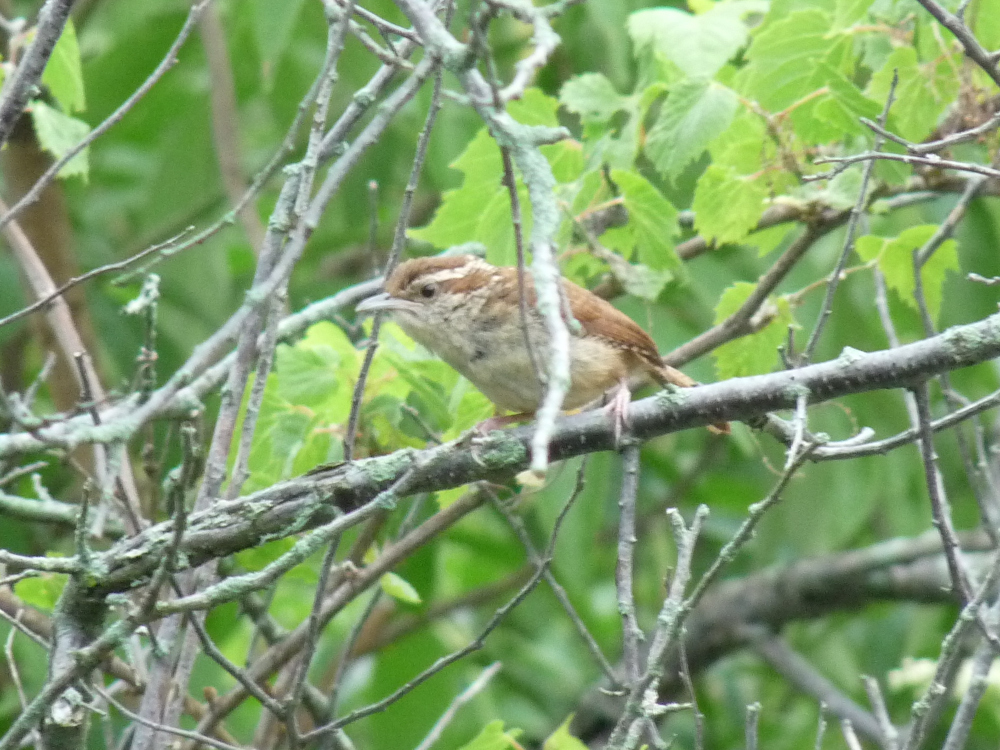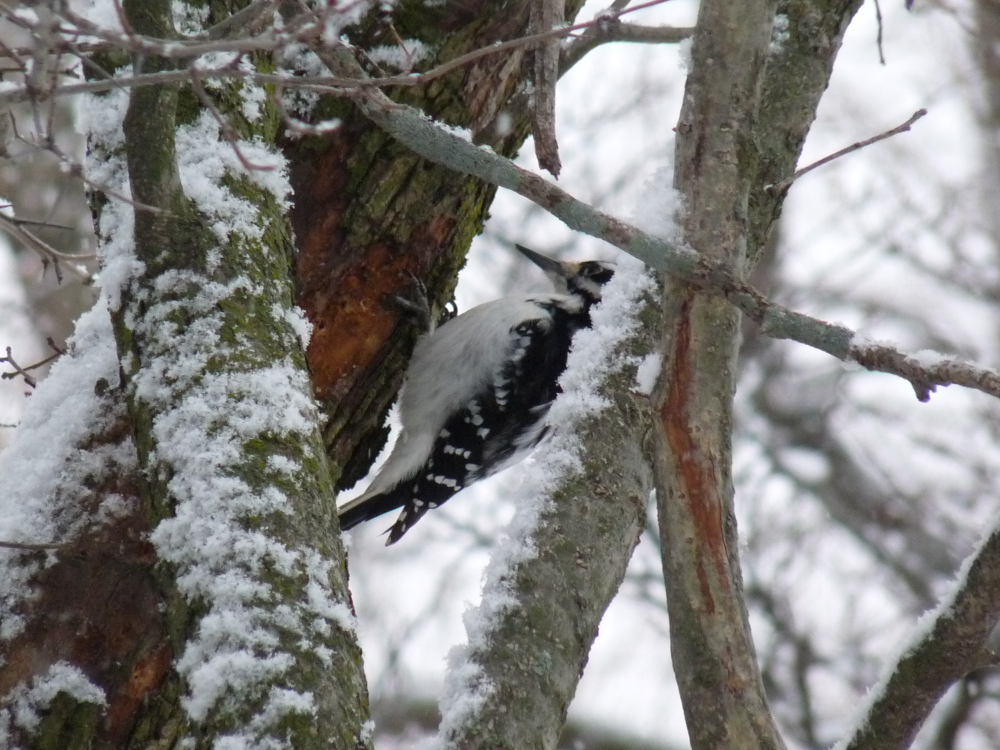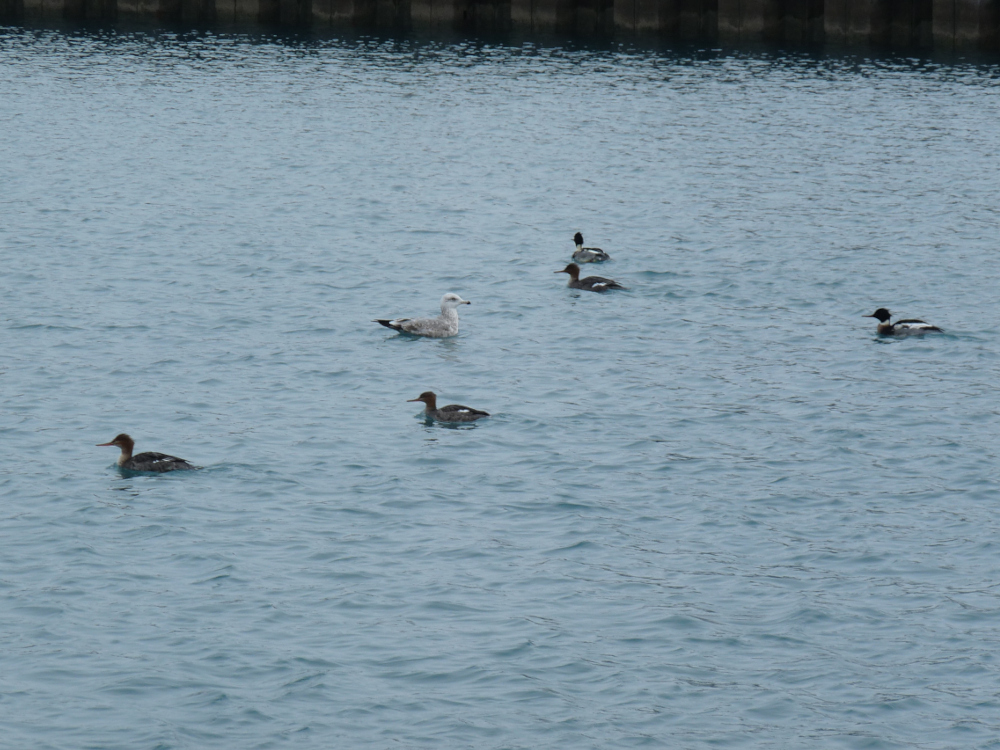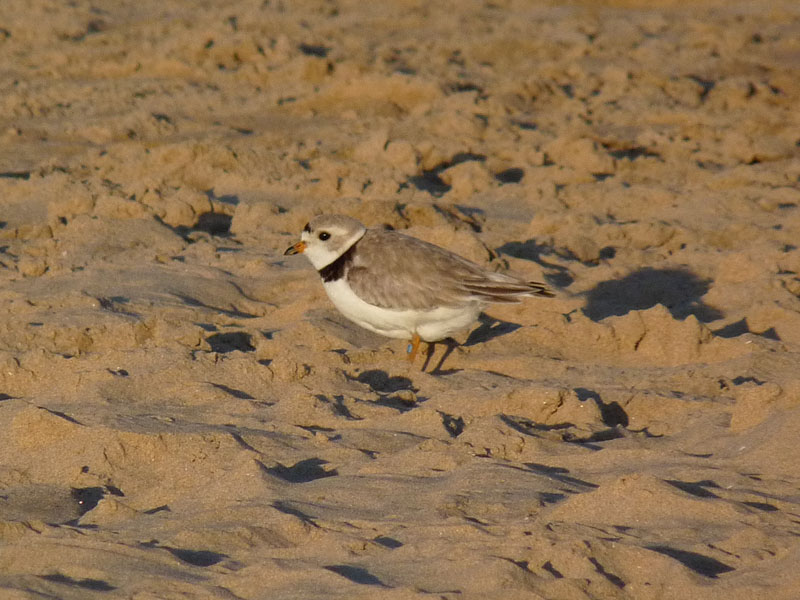Fall Snowy Owls at Montrose are usually a harbinger of more to come over the winter, so when one showed up in the Dunes in November 2023, some of us thought this might be a flight year for them. A check of eBird shows that, as of January 1, 2024, not another has been seen at Montrose, in Chicago, or anywhere in Illinois for that matter. The November bird was a one off fluke and not part of a hoped for larger movement into the Midwest. We’ll have to spend our winter birding time looking for gulls or Red Crossbills, which are irrupting into Illinois.
Category Archives: Ornithology
Carolina Wren, July 1, 2023
A Carolina Wren was a pleasant surprise on July 1. Carolina Wrens aren’t rare in most of Illinois, but the further north you go in the state the less common they are, and they’re uncommon and irregular as far north as Chicago. Oftentimes, and for unknown reasons, they appear in the middle of summer. This is a kind of post breeding dispersal well documented in other species, like Great Blue Herons and Swallow-tailed Kites.
The Uncommon (for us) Hairy Woodpecker
Would you believe that Hairy Woodpeckers are uncommon along the Chicago lakefront? It’s true. They’re fairly common in Chicago and Cook County forest preserves but they don’t make it to the lakefront often. One reason for this uncommonness could be that the lakefront parks lack extensive forest, and Hairy Woodpeckers like forest. By comparison, their smaller, look-alike relative the Downy Woodpecker is regular at Montrose. They even breed there. Downys are more flexible in their habitat preferences and can live in more open, parkland habitat, which is what Montrose and Lincoln Park are.
Kleptoparasitism – Stealing Does a Bird Good
You may have noticed Herring Gulls hanging around groups of Red-breasted Mergansers at Montrose. The gulls are there for a good reason, at least for them – to steal fish the mergansers have caught. When a merganser dives and then surfaces with a fish, the Herring Gulls race in and try to snatch it. Sometimes it works and sometimes it doesn’t, but the gulls must succeed enough to justify the effort. This thieving behavior is called kleptoparasitism and is a common practice where mergansers and Herring Gulls occur together. It’s easier for the gulls to let the mergs do the hard work of finding food and try to steal it then to catch the fish themselves. No one ever said nature was fair or just.
Montrose Piping Plovers – Are They Worth It?
For the third consecutive year, Monty and Rose, our famous Piping Plover couple, nested and raised a family. This is an enormous conservation success story by any measure, the first time Piping Plovers have nested in Chicago in over 50 years.
The wide sandy beach at Montrose is near perfect Piping Plover habitat, but Montrose is far from ideal as a nesting location. Montrose is one of the most popular beaches in Chicago; all that human activity makes life difficult for any bird that nests on the open beach, like Piping Plovers do. The human animals aren’t the only challenge the plovers face. Montrose is also home to several mammalian predators, including Striped Skunks and Racoons, and they aren’t above preying on Piping Plover eggs. In fact, in 2021, a skunk ate some of the eggs from Monty and Rose’s first clutch. As if the mammalian predators weren’t enough, Montrose also hosts Peregrine Falcons, Cooper’s Hawks, Great Blue Herons, and gulls, all capable of dispatching the plovers and their young. With all these threats it’s a miracle Monty and Rose are able to nest and raise a family. The hard truth is that without human involvement the chances of them nesting successfully are small. Part of the beach got fenced off to keep people out in case Monty and Rose decided to nest there in 2021. Like the beach, the Dunes got fenced off to keep people out when Monty and Rose chose to nest there. To protect the eggs form predators, a steel cage was placed over the nest. Even with a cage a determined skunk managed to slip through and pilfer the eggs, forcing Monty and Rose to start over. A new, larger cage prevented this from happening again. To deter avian predators, biologists stationed a trap baited with a live pigeon in the Dunes. On top of all this, a cadre of dedicated volunteers spent hundreds of hours monitoring the plovers.
So the question is, is all this effort worth it? Is all the inconvenience worth it? I led field trips to Montrose in the spring of 2021 and I would take my guests down to the beach and Dunes, where I talked about the nesting Piping Plovers and the efforts to protect them. On one trip a client remarked “All this for a couple little birds?” It’s a legitimate question to ask. I think the answer is a resounding yes. Monty and Rose became celebrities in Chicago, raising awareness of their struggle and the plight of Piping Plovers on the Great Lakes. Their story was mentioned in the news and it became impossible not to sympathize with them. Their story also raised awareness of Montrose and how important it is for wildlife, especially the fragile Dunes.
The story of Monty and Rose is a story of hope and struggle, of people from different backgrounds working together to give a pair of underdogs a fighting chance at raising their kids in a not always hospitable environment. We look forward to their return.
Concepts – Relative vs. Absolute Rarities
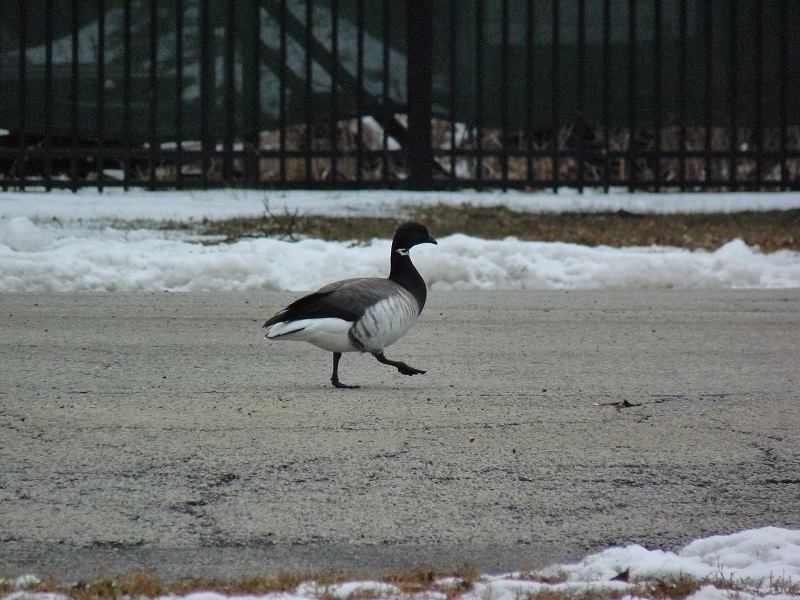
A relatively rare but still exciting Brant at Montrose Point in Chicago, January 2021. (click to see the larger version)
Birders think a lot about rare birds. More than think about — we obsess over them, drive thousands of miles to chase them, and dream about finding them. But what is a rarity? There are a couple of ways to think about this. Most of the rare birds we see are only regionally unusual, that is, they are common someplace within their range but uncommon outside it. The Brant that showed up at Montrose in early January is a good example of this concept. The world population is in the hundreds of thousands, and they’re common on their wintering grounds from New Jersey to Massachusets on the East Coast. Illinois is outside of their main range and migration route, so it’s a big deal here; when one shows up it generates a lot of excitement in the birding community. Brant is rare enough in Illinois to be on the review list of birds requiring documentation, and Montrose has four or so previous records. Relative rareness doesn’t just include birds outside their normal range, it also includes birds outside of their normal timeframe. A Bay-breasted Warbler in Chicago in December is an example.
The other kind of rarity are birds whose entire population is low. The world population of Kirtland’s Warbler in 2020, for example, was a little under 5,000 birds. That’s not a lot. By comparison, the seating capacity of the bleachers at Wrigley Field is about 5,000. Such small populations are vulnerable to all sorts of disturbances. This class has a handful of species, most of which are on the Endangered Species List. Of these, a few have been recorded in Illinois, including Kirtland’s Warbler, and recent records of Whooping Crane and Red-cockaded Woodpecker.

